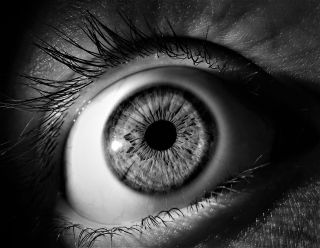Alcoholism
The Dangers of Vodka Eyeballing and Drinking a Borg
Putting alcohol in your eyes can permanently harm your vision.
Posted September 19, 2023 Reviewed by Abigail Fagan
Key points
- Vodka eyeballing is a dangerous practice that can permanently harm one's vision.
- Drinking a borg is the latest high risk drinking trend that can lead to severe harms and blackouts.
- University students can be pressured to participate in these high-risk drinking activities.

Halloween is just around the corner and people may be preparing some spooky drinks for their parties. While some may consider serving some (gummy) eyeball shots, I was recently asked by a student, “Can you get drunk by putting alcohol on your eyeball?”
When asked this question, my knee-jerk reaction was: “Absolutely don’t do that!” But then the scientist in me became curious about whether this was possible at all. Now, I’ve done some research and want to reiterate: Absolutely do not put any alcohol in your eyeballs.
In fact, in 2010, the American Academy of Ophthalmology issued a public statement that "vodka eyeballing," as this practice is sometimes known, can harm one’s eyes and vision in many ways, such as by damaging one’s cornea, permanent vision loss, and increasing the risk for eye infections.1 While this statement was from 13 years ago, I suspect that their position remains the same.
The fact that I received this question in one of my classes tells me that this is still something on some students’ minds. My hope in writing this post is that we can avoid having history repeat itself on this particular issue. Of course, this still doesn't address another question: Hypothetically, could you become intoxicated if alcohol comes in contact with your eye?
How Does Alcohol Usually Go From Bottle to Blood?
Alcohol is typically consumed orally—that is, taken through the mouth and swallowed. Then alcohol makes its way to the stomach.
Some amount of alcohol is broken down in the stomach by the gastric enzyme alcohol dehydrogenase or is absorbed into the bloodstream through the stomach lining. Most alcohol is absorbed into the bloodstream once it enters the small intestine.
Once in the blood, it circulates around your body. Once it crosses the blood-brain barrier, your brain is exposed to alcohol. Alcohol’s interaction with specific receptors in the brain leads to its intoxicating effects. The key here is that alcohol must come in contact with a tissue membrane that it can cross to enter the bloodstream and make it to the brain.
Does "Vodka Eyeballing" Bring Alcohol to the Bloodstream?
The original idea behind this practice was that alcohol would be absorbed through the capillaries in the eyes, directly into the bloodstream near the brain. But the reality that physicians have pointed out is that very little alcohol is absorbed in this way.2
Plus, as described above, even attempting this is likely going to do considerable damage to various parts of the eyeball. So vodka eyeballing will not get you drunk, and the side effects from trying it are likely to be significant.
Blackout Rage Gallons are the Newest Risky Drinking Trend
While vodka eyeballing may be old news, we often see new ways of risky drinking popping up among university students. The latest trend is referred to as blackout rage gallons, or "borgs" for short. "Borgs" include a full fifth of vodka, water, and some sweet flavouring.3
The fifth of vodka in a borg is equal to 16 standard drinks (16 1.5 oz shots worth). Drinking more than four or five standard drinks in a sitting is considered high risk drinking because it increases your blood alcohol concentration to 0.08% alcohol by volume. While this may seem low, it is in fact a level where people are legally impaired by alcohol. This can include impaired physical and mental abilities, such as reduced judgement and impaired self-control.4
Drinking a borg can get you to three or four times this legally impaired level, leading to blackouts. In a blackout, all mental, physical, and sensory abilities are severely impaired. Accidents are likely to happen, the person has little comprehension or awareness, and they may pass out suddenly.
Why Do Students Follow Dangerous Drinking Trends?
There are a number of factors at play here, and the importance of each one may depend on the specific person or context.5 We know that:
- Peer influences are powerful for youth and young adults. University students are susceptible to following the lead of people they admire or want to impress. This can include doing risky behaviours, like drinking borgs.
- It may be an issue of lack of awareness of knowledge of the risks. Someone may not be well-informed about the risks of these drinking behaviours before they commit to them. They trust that it is relatively safe because other people have "survived" it.
- Their decision making is impaired from earlier drinking. Someone may commit to drinking a borg after they have already had a few drinks. We know that having already had some alcohol will alter people's decision making, and tend to lead to more risky decisions.
- The transition to university can be a stressful period that can expose students to certain risk factors for heavy drinking, such as increased mental health symptoms, Greek membership, and drinking games.
What Should You Do If Someone Is Pressuring You to Drink in a Risky Way?
Fortunately, vodka eyeballing is mostly a thing of the past; however, there seems to always be new ways of risky drinking (e.g., borgs). On the off chance that you find yourself in a situation where people around you are pressuring you to drink in a risky way, keep in mind that you can always:
- Just say “No thanks!”
- Make an excuse: “I have my contacts in, so it won’t work” or “I rather pace myself.” or "I want to stay in control."
- Get away from the situation.
References
1. Statement from the American Academy of Ophthalmology regarding “vodka eyeballing.” American Academy of Ophthalmology. (2015, January 31). https://www.aao.org/newsroom/news-releases/detail/statement-from-americ…
2. Bosmia, A. N., Griessenauer, C. J., & Tubbs, R. S. (2014). Vodka eyeballing: a potential cause of ocular injuries. Journal of injury and violence research, 6(2), 93.
3. Alonso, J. (2023, February 22). New gallon drinking trend takes off at college campuses. Inside Higher Ed | Higher Education News, Events and Jobs. https://www.insidehighered.com/news/2023/02/22/new-gallon-drinking-tren…
4. Blood Alcohol Content. (n.d.). https://www.utoledo.edu/studentaffairs/counseling/selfhelp/substanceuse…
5. Merrill, J. E., & Carey, K. B. (2016). Drinking over the lifespan: Focus on college ages. Alcohol research: current reviews, 38(1), 103.




